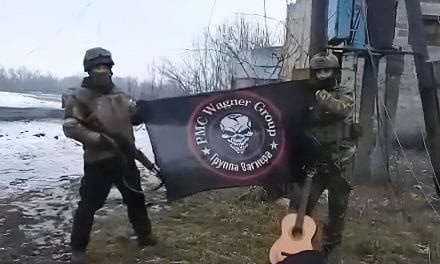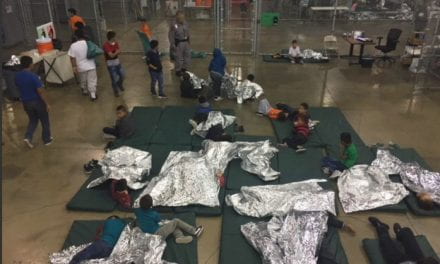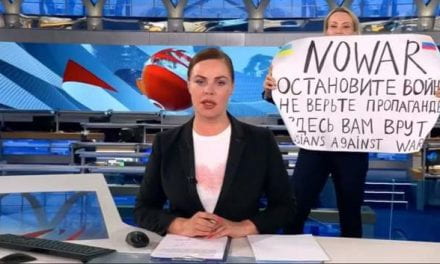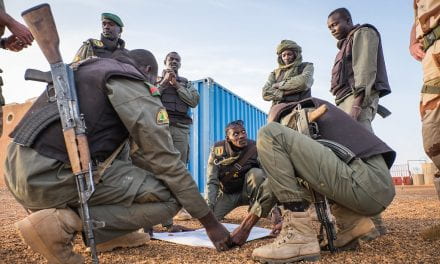On February 24th, 2022, Vladimir Putin and the Russian military invaded Ukraine, causing an international response in all four categories used by governments to force results around the globe: diplomatic, intelligence, military, and economic. The most employed tactic the European and North American states are using is economic sanctions. Sanctions allow the world community to cripple Russia’s ability to raise and support its military and prevent states from having to send in their military force. Sanctions are also being used to understand the international community’ loyalties, this will be used as the threat of China continues to grow. These sanctions have holistically crippled the Russian economy and brought economic mobility to an all-time low in this post-cold war era. With over 200 different sanctions being put in place by thirty-one nations, plus the European Union, a majority of these sanctions target four areas related to the economy. Access to financial institutions used to pay for goods or services, currency destabilization, ability to trade goods and services, and access to personal money.[1] This article will examine the four umbrella categories of economic sanctions, how the economics of the sanction works, and final argue why sanctions have succeeded in limiting Russia’s ability to sustain war.
Sanctions are part of the DIME, Diplomatic, Intelligence, Military, and Economic thought process, which concerns spreading influence and shaping the world outside the United States. Sanctions fall under the “economic category” of DIME and offer leaders an option to impact other states’ economies. The goal of sanctions is to change behavior by limiting the resources, money, supplies, and support a country can obtain.[2] The sanction degrades a country’s economy by restricting trading partners and their economic opportunities.[3] With economic decline comes the difficulty with maintaining an acceptable standard of living, which can cause civil unrest. Civil unrest puts political pressure on leaders to create solutions to these economic hardships, meaning leaders will have to change their behavior to see economic restrictions lifted. The other way sanctions change behavior is by taking away resources that leaders need to achieve their goals, resources such as money to fund armies or groups, materials to build bombs or tanks, or aid to maintain power. Sanctions can have two roles, supporting or leading. The supporting role is when the economic sanction is coupled with military actions. They support troops on the ground by attacking the enemy on another front. When sanctions take a leading role in changing behavior, they are associated with intelligence and diplomacy. The economic attack seeks to bring enemies into diplomatic interactions or allow the intelligence provided to have a more significant effect. In the Russian-Ukraine war, sanctions play a primary role as the United States and others try to change the war’s outcome. The economic attack on Russia seeks to limit the ability to acquire resources that are required to win the war and force Russian leadership to negotiate.
The first two significant economic sanctions limit access to financial institutions used when paying for goods or services, and the second destabilizes the ruble, rendering it useless. Restricting access to financial institutions, the G10 central bank removed Russian’ owned and utilized banks and businesses from accessing the Society for Worldwide Interbank Financial Telecommunication, or SWIFT. [4] Preventing “Russia’s largest bank Sberbank, Credit Bank of Moscow, and Russian Agricultural Bank, and the Belarusian Bank For Development And Reconstruction” from being able to trade quickly and send the correct currency of the institution they are seeking to pay.[5] While alone not a particularly potent sanction, as there are workarounds a government can use in these situations, it signals to companies not to do business with Russia. One key aspect of using the SWIFT clearing house is the ability to pay a seller in the correct currency. With no clearing house in the middle, the correct currency funds must be acquired in-house, either through a government or business interaction. Obtaining the correct currency in-house becomes impossible when governments, coupled with the removal of Russian financial institutions, halt business interactions. In the United States alone, 42 of the largest Russian-owned and operated businesses were sanctioned, including all subsidiaries.[6] With the United States’ actions and the accompanying Russian-owned and operated businesses also located in Canada and all EU states, the ruble dropped in value by 53.57 percent, bottoming out at .0075 to 1 USD on March 10th, 2022, just 14 days after the invasion started.[7]
Clearing houses are essential to international economics today as they are secure financial institutions that facilitate payment for international businesses. A clearing house is a large central bank that companies and other financial institutions use to mitigate risk and increase coordination when making payments around the global market.[8] A clearing house operating in the global market will also have large cash reserves of international money. This reserve of international currency allows a company in one country to pay a company in a different country that operates with a foreign currency reliably. This can occur because, in-house, a clearing house can convert currency with little expense and bridge the gap between banking institutions that differ in regulation and systems across the world. The SWIFT clearing house fills this role in the international market, and is the only such institution that is insured, secured, and widely used.[9] These cleaning house benefits give sellers and buyers the confidence to pay and require payment worldwide because a trusted clearing house handles and ensures payment delivery. No other international institution comes close to the capacity, security, and widespread use compared to SWIFT. This explains why removing Russia from utilizing SWIFT is significant. With Russia no longer able to access SWIFT, it can no longer trade with the countries efficiently or with any level of international security.[10]
While the ruble has recovered to pre-invasion levels, .014 to 1 USD, the recent instability of the currency has made it almost unacceptable when paying for goods outside of Russia. With no widespread clearing house accessible and businesses not being allowed to trade, a company cannot sell its goods, and with the ruble not being accepted, the government has no way of paying for goods in the event someone sells to them. Traditionally, if companies couldn’t use a clearing house as they conduct business deals around the world, these dealings would bring in enough different currencies to allow them to pay for the goods and services they needed. Combined with many businesses doing this all the time, a national bank could act as the middleman to allow the correct currency to go to the proper business as needed. This can’t occur in Russia as they don’t have enough international business to create the international currency flow to be able to create an internal clearing house. The Russians do have access to Chinese clearing houses, but these are suboptimal substitutes to SWIFT, forcing Russia into trade and currency instability.[11] These two economic moves have crippled the economy in Russia.
Russia also faces economic travel sanctions, preventing travel exports from Belarus and Russia by the European Union. While non-economic travel, like migrants or personal trips, have not been banned, planes, trains, boats, and trucks used in the transportation of goods have been banned.[12] This means if Russia wants to export goods to European Union states, the second largest market in the world by purchasing power, they must travel through Georgia and into Turkey to reach the European market. But in the process, they would need to sell their goods to a company not sanctioned by the European Union, as Russian companies cannot do business in the European Union. This economic sale is unlikely to happen as companies caught trading with Russia, then funneling these goods into the European market, would be punished. The ban, in coordination with the company sanction list, blocked Russia from the second and third-largest markets in the world.[13] These two sanctions have caused the Russian economy to contract by 11.4% in 2022, a loss of 193.8 billion dollars, as of third quarter of 2022.
The final significant economic sanction is hindering the ability of key Russians to access their personal money. Thirty-one states are freezing the domestic accounts and holdings of Russian citizens. Each state has its own list of sanctioned individuals, but the combination of these lists consists of the richest individuals in Russia and people who are closest to the Kremlin.[14] This tactic is twofold; it prevents billions of dollars of stable foreign currency from being brought back to Russia, and it makes the people closest to Vladimir Putin uncomfortable.[15] Most states don’t care if the wealthy continue maintain their wealth, but because they are Russian, these personal accounts can act as a slush fund for the government at a moment’s notice.[16] That means as Russia’s cash reserve runs low, Vladimir Putin will begin to take money, in the billions, from personal and corporate accounts of wealthy Russians and businesses. These cash reserves might fund weapons sales for example, strengthening the Russian army and prolonging the conflict in Ukraine. These cash reserves are oftentimes held as foreign currency, which opens more opportunities to buy the essential goods needed to sustain an army, also prolonging the war. By freezing these accounts, states prevent the money from aiding the Russian war effort. Also, making this money inaccessible to their owners puts pressure on Vladimir Putin as people who have access to him become uncomfortable. They develop a vested interest in ending the war and will talk and act accordingly to try to end the war. This puts Putin under intersocial pressure.
Economic sanctions can significant degrade military readiness, and it’s this aspect of sanctions that 30 states and the EU use to fight Russia. Economic sanctions on the Russian government is making it harder to sustain the war, and the effects often aren’t seen instantly, taking days or months to see the full effect.[17] While Ukraine will have to fight for freedom, they do not have to overwhelm the Russian force, they need to simply withstand it. As Ukraine resists the Russian invasion, the international community has utilized economic warfare to slowly dismantle Russia’s ability to wage war over time. Russia has depleted many of its military reserves and has no way of resupplying the front lines as the economic sanctions have limited the conflict to the reserves Russia had before the war began.[18] If Ukraine can degrade its military force, the hope is that Russia will be forced to pull out of the conflict due to a lack of resources.
Once the conflict has come to an end and Russia begins to grow its economy, economic sanctions will likely stay in effect continue to undermine Russia’s ability to wage war in the future. The international community may not lift all sanctions which would prevent Russia from returning to the economic freedom it enjoyed pre-invasion. In the unlikely scenario that all sanctions are in fact lifted, Russian businesses still would not enjoy the same market they once occupied. The best way to tell if the sanctions are going to be lifted is to reflect on the 2014 annexation of Crimea, which also saw sanctions put in place. These sanctions were not lifted after Russia finished annexing Crimea and resulted in Russia losing 2.2% of its GDP in 2015.[19] As Russia continued to control Crimea post-conflict, the international community extended the expiration date on these sanctions. This practice of leaving sanctions in place will likely continue if Russia is successful in its invasion of Ukraine. In the event Russia is unsuccessful in Ukraine, the international community can allow current sanctions to expire but will most likely keep them in place either because of internal political pressure in their states or as a way of continuing to hurt Vladimir Putin’s regime. Key industries that will quickly open back up are oil and natural gas, as these raw materials are at the core of most price increases across the developed world.[20] Even after war has ended the international community will keep station in place. One example is after the Iran war in the 1980s where, to this day, while Iran is not in an active shooting war with European or American forces, they still rank as the second most highly sanctioned country in the world.[21]
If the international community allows Russia to substantially or fully reintegrate with the global market, as was the case before February 22nd, the market has already made moves to fill the demand left unfilled during sanctions. Market shortages have allowed new firms to enter and existing firms to sell a more significant market share. Initially, Russian businesses had an established presence that kept firms out of their market space, but that advantage disappeared during the war. Russian business advantage is not quickly regained as expanding and start-up businesses have paid off their original investments to allow them to meet market demand and diminish marginal costs to produce goods. Initially, these start-up costs created barriers to market entry, but as the price of goods began to rise and Russian businesses lost all access to the market, creating shortages that gave new or existing firms a comparative advantage, allowing them to fill market demand. These increased economies of scale firms enjoy will make it difficult for Russian businesses to move back into the international market post-conflict, regardless of sanctions.
With the unprecedented level of international sanctioning in Russia, these sanctions are working. The economic damage can be seen in the IMOEX, the Russian stock index, losing 50% of its value since the invasion began.[22] This economic drop has resulted in real-world effects as Russia cannot replenish the resources as they are lost in combat. The lack of resources is forcing battlefield losses, and the United States would like to continue seeing this positive behavior.
The utilization of sanctions has damaged the Russian economy and its ability to maintain a war in Ukraine. The limited money and weapons have led to altered behavior by the Russian military and Vladimir Putin. The West hopes to continue to deny easy access to raw materials as the war continues, allowing Ukraine to remain out of Russian hands.
[1] Funakoshi, Minami, Hugh Lawson , and Kannaki Deka. “Tracking Sanctions against Russia.” Reuters. Thomson Reuters, March 5, 2022. https://graphics.reuters.com/UKRAINE-CRISIS/SANCTIONS/byvrjenzmve/.
[2] Masters, Jonathan. “What Are Economic Sanctions?” Council on Foreign Relations. Council on Foreign Relations, August 12, 2019. https://www.cfr.org/backgrounder/what-are-economic-sanctions.
[3] Gavin, Joseph G. “Economic Sanctions: Foreign Policy Levers or Signals?” Cato Institute, 1989. http://www.jstor.org/stable/resrep04898.
[4] “EBA Clearing, Swift and the Clearing House Join Forces to Speed up and Enhance Cross-Border Payments: SWIFT – the Global Provider of Secure Financial Messaging Services.” SWIFT, October 11, 2021. https://www.swift.com/news-events/press-releases/eba-clearing-swift-and-clearing-house-join-forces-speed-and-enhance-cross-border-payments.
[5] “Russia’s Aggression against Ukraine: Eu Adopts Sixth Package of Sanctions.” Consilium, June 3, 2022. https://www.consilium.europa.eu/en/press/press-releases/2022/06/03/russia-s-aggression-against-ukraine-eu-adopts-sixth-package-of-sanctions/.
[6] “U.S. Treasury Escalates Sanctions on Russia for Its Atrocities in Ukraine.” U.S. Department of the Treasury, April 6, 2022. https://home.treasury.gov/news/press-releases/jy0705.
[7] Journal, Wall Street. “Rub to USD | Russian Ruble/U.S. Dollar Historical Prices – WSJ.” The Wall Street Journal. Dow Jones & Company. Accessed May 9, 2022. https://www.wsj.com/market-data/quotes/fx/RUBUSD/historical-prices.
[8] “Swift History: Swift – the Global Provider of Secure Financial Messaging Services.” SWIFT. Accessed November 10, 2022. https://www.swift.com/about-us/history.
[9] Seth, Shobhit. “How the Swift Banking System Works.” Investopedia. Investopedia, August 23, 2022. https://www.investopedia.com/articles/personal-finance/050515/how-swift-system-works.asp#:~:text=SWIFT%20is%20overseen%20by%20central,of%20all%20of%20its%20members.
[10] Seth, Shobhit. “How the Swift Banking System Works.” Investopedia. Investopedia, August 23, 2022. https://www.investopedia.com/articles/personal-finance/050515/how-swift-system-works.asp#:~:text=SWIFT%20is%20overseen%20by%20central,of%20all%20of%20its%20members.
[11] “Why China’s Payment System Can’t Easily Save Russian Banks Cut Off From Swift.” Bloomberg.com. Bloomberg, March 14, 2022. https://www.bloomberg.com/news/articles/2022-03-14/why-china-s-payment-system-can-t-easily-save-russia-quicktake.
[12] “Sanctions Adopted Following Russia’s Military Aggression against Ukraine.” European Commission – European Commission, May 6, 2022. https://ec.europa.eu/info/business-economy-euro/banking-and-finance/international-relations/restrictive-measures-sanctions/sanctions-adopted-following-russias-military-aggression-against-ukraine_en.
[13] “GDP (Current US$).” Data. Accessed May 9, 2022. https://data.worldbank.org/indicator/NY.GDP.MKTP.CD.
[14] Council of the European Union. “EU Restrictive Measures against Russia over Ukraine (since 2014).” Consilium, October 12, 2022. https://www.consilium.europa.eu/en/policies/sanctions/restrictive-measures-against-russia-over-ukraine/#sanctions.
[15] Rappeport, Alan. “U.S. Escalates Sanctions with a Freeze on Russian Central Bank Assets.” The New York Times. The New York Times, February 28, 2022. https://www.nytimes.com/2022/02/28/us/politics/us-sanctions-russia-central-bank.html.
[16] Council of the European Union. “EU Restrictive Measures against Russia over Ukraine (since 2014).” Consilium, October 12, 2022. https://www.consilium.europa.eu/en/policies/sanctions/restrictive-measures-against-russia-over-ukraine/#sanctions.
[17] CRIMMINO, RYAN. “PUTIN IN CRIMEA: Have Sanctions Run Their Course?” Harvard International Review 39, no. 2 (2018): 16–18. https://www.jstor.org/stable/26617332.
[18] U.S Department of State. “The Impact of Sanctions and Export Controls on the Russian Federation – United States Department of State.” U.S. Department of State. U.S. Department of State, October 21, 2022. https://www.state.gov/the-impact-of-sanctions-and-export-controls-on-the-russian-federation/.
[19] “Sanctions after Crimea: Have They Worked?” NATO Review. Nato Review, July 13, 2015. https://www.nato.int/docu/review/articles/2015/07/13/sanctions-after-crimea-have-they-worked/index.html.
[20] Anderson, Richard J. “Europe’s Dependence on Russian Natural Gas: Perspectives and Recommendations for a Long-Term Strategy.” Europe’s Dependence on Russian Natural Gas: Perspectives and Recommendations for a Long-term Strategy | George C. Marshall European Center For Security Studies, September 2008. https://www.marshallcenter.org/de/node/1276.
[21] Zandt, Florian, and Felix Richter. “Infographic: The World’s Most-Sanctioned Countries.” Statista Infographics, March 9, 2022. https://www.statista.com/chart/27015/number-of-currently-active-sanctions-by-target-country/.
[22] “Moex Russia Index (IMOEX.ME) Charts, Data & News.” Yahoo! Finance. Yahoo!, October 20, 2022. https://finance.yahoo.com/quote/IMOEX.ME/.







